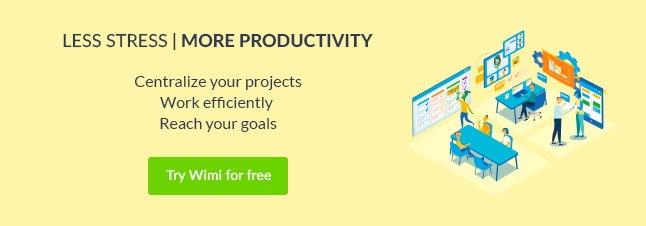Meetings are unavoidable at work. Who doesn’t have a meeting at least once a week, or even once a day? If they can often be time-consuming and counter-productive, meetings remain an indispensable communication and collaboration tool that at the same time allows us to inform, exchange and decide.
However, in order to be effective, a meeting should be short, well prepared and organised with a precise agenda. The role of the organiser is to encourage all participants to speak and to ensure to not exceed the allotted time. At any rate, as soon as the meeting is finished, a detailed minutes should be drafted and given to all the people concerned.
The meeting minutes is a very important document. Discover why it is essential and how to write it well.
What is the point of taking meeting minutes ?
You have just finished an effective meeting where problems were resolved and where everyone left with a list of tasks to accomplish to continue to move forward on a project. It’s perfect.
Now, get down to writing a meeting minutes, an indispensable document that allows you to put everything that was said in writing.
Here are the different objectives of meeting minutes:
- accurately summaries the exchanges
- formalise the decisions taken and the responsibilities of each person
- set precise objectives
- keep a trace of the discussions
- inform the participants as well as those absent
- prepare the next meeting on the same subject
The meeting minutes is uniquely effective. You must accurately retrace the proceedings of the meeting and the different decisions that were taken without adding or missing anything. Be careful, it is not a question of transcribing the dialogues, but a summary of the ideas and the decisions taken. It will be kept in the archives.
You must be objective and impersonal, write in a neutral tone and not include your opinion or commentary. You need to be clear, precise, concise and structured, and the essential elements should be clear in a glance.
The different stages to writing meeting minutes
Do you want to write a good meeting minutes? Follow these 7 steps.
1. Take notes of the meeting
Evidently, in order to write a precise and accurate minutes, it is crucial to take notes throughout the meeting. In order to simplify the task and be certain you miss nothing, you can record the meeting with your phone (there are apps for this) or a dictaphone.
This does not mean you should not take notes at the same time. To be quicker, takes notes directly on your computer.
2. The earlier, the better
Ideally, you should write the minutes immediately after the end of the meeting, while you still remember everything that has been said. If you have any doubts, do not hesitate to ask for help from one of the people present in the meeting.
3. Create a standard model
For more efficiency, you can also create a minutes framework that you will use for every meeting. In this way, it will be easier to take notes, you will save time when writing it up and the participants will be used to the format of the minutes, especially if the meetings take place regularly.
Pre-fill your framework in advance with the information that you already know like the date and the meeting place, the agenda, the participants, etc… During the meeting, directly take your notes in your framework
4. What you need to include
In your meeting minutes, some essential information should appear, like :
- the name of the company ;
- the date and place of the meeting ;
- a list of the participants and their respective functions, as well as the absentees and the excused
- the agenda
- the different subjects brought up
- the decisions taken, the responsibilities of each person and the key information discussed during the meeting (like the ongoing tasks and completed ones) ;
- the identities of the writers ;
- the date of the next meeting
5. Structure your minutes
A good minutes should be easy to read. The readers should find the information they need easily.
Ideally, it should be divided in three parts :
- an introduction : indicate the subject and the key features of the meeting ;
- the development : go back over the different parts of the agenda one by one. Don’t hesitate to use sections, paragraphs or bullet points, etc.
- a conclusion : clarify the decisions that were taken, the new actions to take, the person in charge and their deadline, as well as the date of the next meeting
6. Re-read what you have written
Have you finished your minutes? Do not forget the re-reading phase, essential for not forgetting anything and assuring that your minutes is coherent. Do not hesitate to do a re-reading of your document to one or a few of the participants before sending it to avoid misunderstandings or omissions.
Make sure that it is written in correct English too, without spelling mistakes.
7. Send the minutes quickly
It is better to spread your minutes as a whole to the people concerned as quickly as possible, 2 or 3 days maximum after the meeting. It is obvious that the participants should receive it before the next meeting.
Send it to all the people invited to the meeting, including absentees and people excused so that they are informed of what they have missed and the possible tasks that they have been assigned.
Bonus >> Download your meeting minutes template
(.doc, .odt & google docs)
Finally, the minutes should be easily available and available for consultation at any time. For this, share it on a collaborative platform. On your project management software (Wimi if that’s ok ;)), all your documents and minutes are centralised and accessible to all people concerned.
From now on, you have all the keys at your disposal to write accurate meeting minutes. It’s over to you!










